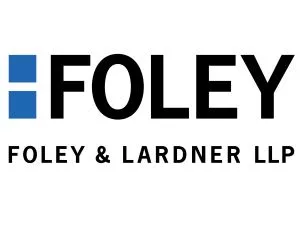- within Corporate/Commercial Law topic(s)
- with Inhouse Counsel
- in South America
- in South America
- in South America
- with readers working within the Banking & Credit industries
Kim v. FemtoMetrix addresses a common gap in a voting agreement that permitted a company and majority stockholders to amend the agreement and remove a board designee against the wishes of the designating stockholders. Avaco Co., Ltd. (Avaco), a stockholder of FemtoMetrix, Inc. (FemtoMetrix or the company), and its board designee, Mr. Kim, sued FemtoMetrix challenging an amendment to the company's voting agreement that allowed for the removal of Mr. Kim from the company's board, even though such a removal was expressly prohibited by the voting agreement. The voting agreement provided that Avaco could appoint one board member and that Avaco's designee could not be removed without Avaco's consent unless for cause. The amendment introduced a prohibition on board membership for any service provider or affiliate of a person engaged in commercial litigation against the company, thereby disqualifying Mr. Kim from board membership because Avaco was already engaged in commercial litigation against the company in a separate lawsuit. The amendment therefore circumvented the voting agreement provisions specifying that Avaco's designee could not be removed without Avaco's consent. The court granted summary judgment in favor of the company, allowing the amendment to the voting agreement and Mr. Kim's removal from the board. In doing so, the court exposed a potentially large loophole in language that is similar to that found in many voting agreements, with implications for minority stockholders under stockholder agreements in general.
The dispute implicated Sections 1.2 and 1.4 of the voting agreement, containing designation and removal rights, and section 7.8, containing amendment provisions. The court declined to address other plaintiffs' arguments because they were not appropriately pled. Section 1.2(a) set forth a customary director designation right. Section 1.4(a) provided that Mr. Kim could not be removed without Avaco's consent except for cause. The amendment made Section 1.4(a) subject to a new Section 1.4(d), which conditioned board membership on not being a "Conflicted Director," which was defined as someone who is a service provider or affiliate of a person engaged in commercial litigation against the company. The court rejected the plaintiffs' argument that the amendment violated sections 1.2 and 1.4 of the voting agreement, noting that neither section precluded an amendment that affected the designation right. The court held that the designation right was not absolute and did not preclude changes in eligibility criteria. The court held that being a "Conflicted Director" under these new eligibility criteria made the director removable for cause.
Section 7.8 set forth the general approval requirement for amendments, and a number of exceptions, two of which were at issue. The first exception, section 7.8(a), provided that the voting agreement could not be amended with respect to any investor without such investor's written consent, unless the amendment applied to all investors "in the same fashion". In rejecting the plaintiffs' argument that the amendment at issue therefore required Avaco's consent because Avaco was the sole investor impacted by it, the court held that the amendment was "facially neutral", and "equal application, as contemplated by Section 7.8(a), is not the same as equal effect. Nothing in Section 7.8(a) requires that an amendment always have an identical effect on each Investor." The second exception at issue, Section 7.8(e), provided that Section 1.2(a) could not be amended without the written consent of Avaco. The court held that this provision was also not violated by the amendment because the language of Section 1.2(a) was not amended. According to the court: "Avaco could have bargained for a right to veto every amendment that affects its Board designees. It did not. It agreed that it has the right to veto amendments to Section 1.2(a) specifically."
The decision contains important lessons for minority investors, such as investors in growth equity or venture deals. The language at issue was similar to that often found in voting agreements, including that in the form voting agreement of the National Venture Capital Association (NVCA). The first problem was that the designation and removal rights did not provide Avaco with the watertight protection it likely envisioned for two reasons: first, the designation and removal right could be undermined by an amendment introducing director qualifications, and second, the prohibition on amendments without Avaco consent only applied to Section 1.2(a) and not to all provisions in the agreement that impacted designation and removal by Avaco. The result here may not have been particularly harsh, given that Avaco was embroiled in litigation with the company. But what if instead the amendment had provided that any service provider or affiliate of a shareholder whose name begins with the letter "A" would be ineligible to serve on the board? That would preclude any service provider of Avaco from serving on the board regardless of whether there was litigation between Avaco and the company. The opinion exposes a loophole in the designation and removal provisions that is potentially extremely broad. This could be addressed by prohibiting any amendment without Avaco's consent if the amendment limited or interfered with Avaco's right to designate or remove its designee, or introduced or expanded the right of any other stockholders to remove Avaco's designee. The Avaco consent right would not be limited to amendments of Section 1.2(a).
The second problem was the standard in Section 7.8(a) requiring individual investor consent for amendments unless they applied to all investors "in the same fashion". This is a commonly used standard, and one used in NVCA forms. The court's focus on facial neutrality in an amendment, and its dismissal of the relevance of the actual effect of the amendment on an investor, exposes the very low degree of protection that the "in the same fashion" standard provides minority investors. For example, what if an amendment to a stockholder agreement provided: "In any sale of the company, if any investor that is a publicly traded technology company does not agree to a broad noncompete and a general release of claims for the benefit of the acquiror of the company and its affiliates, such investor will forfeit its right to receive any consideration in the sale"? Or alternatively, consider an amendment providing: "If any investor that is a publicly traded technology company ever engages in any business with any competitor to the company, the company has the right to repurchase the investor's shares for $0.01 per share." Both provisions are arguably facially neutral because they do not on their face reference any specific stockholder. Stockholders holding the requisite percentage of shares could therefore approve this type of amendment, to the detriment of any stockholder that is a publicly traded technology company. Practitioners should be mindful of the weak protection that the "in the same fashion" standard affords investors.
The content of this article is intended to provide a general guide to the subject matter. Specialist advice should be sought about your specific circumstances.




